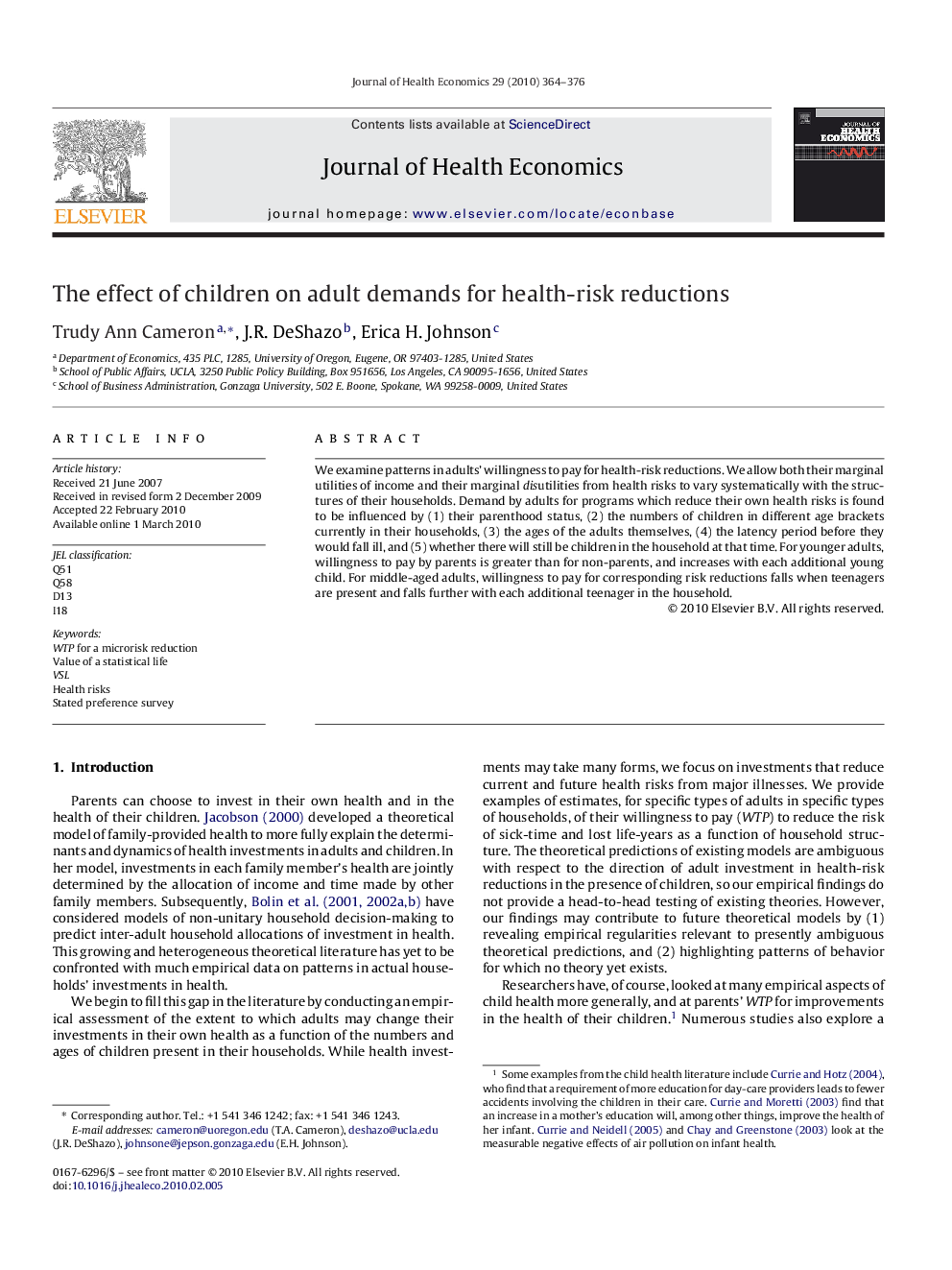| Article ID | Journal | Published Year | Pages | File Type |
|---|---|---|---|---|
| 961909 | Journal of Health Economics | 2010 | 13 Pages |
Abstract
We examine patterns in adults' willingness to pay for health-risk reductions. We allow both their marginal utilities of income and their marginal disutilities from health risks to vary systematically with the structures of their households. Demand by adults for programs which reduce their own health risks is found to be influenced by (1) their parenthood status, (2) the numbers of children in different age brackets currently in their households, (3) the ages of the adults themselves, (4) the latency period before they would fall ill, and (5) whether there will still be children in the household at that time. For younger adults, willingness to pay by parents is greater than for non-parents, and increases with each additional young child. For middle-aged adults, willingness to pay for corresponding risk reductions falls when teenagers are present and falls further with each additional teenager in the household.
Related Topics
Health Sciences
Medicine and Dentistry
Public Health and Health Policy
Authors
Trudy Ann Cameron, J.R. DeShazo, Erica H. Johnson,
